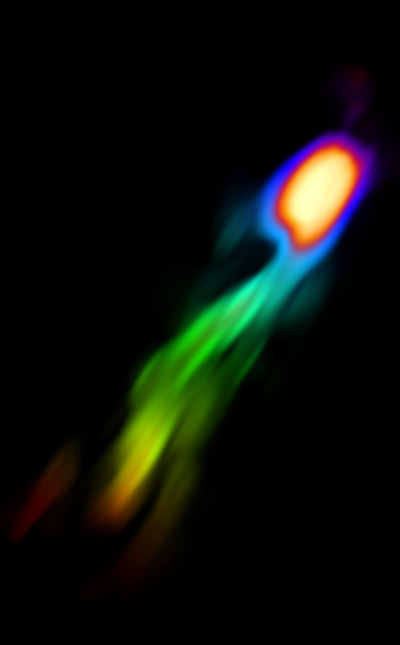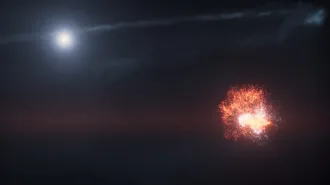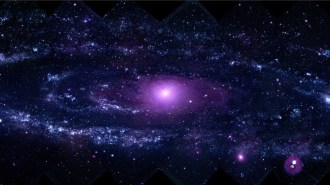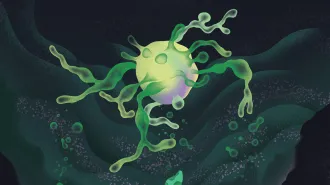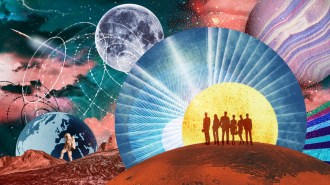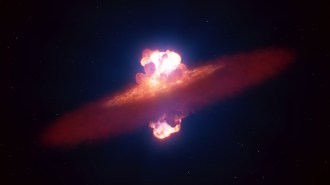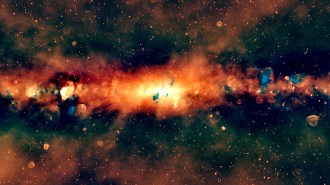Starlight robs galaxy of stellar ingredients
Newborn stars may prevent future generations from forming
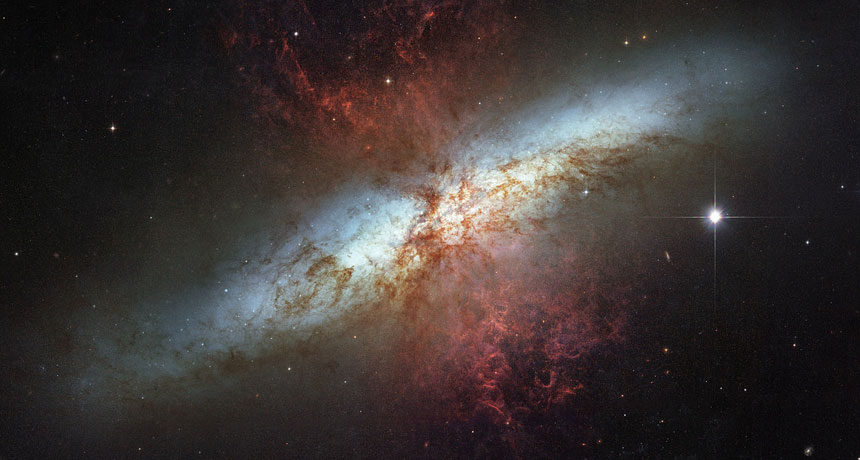
MOVING OUT Light from a prolific burst of star formation blows clouds of ionized hydrogen (red) out of the galaxy M82, a typical starburst galaxy seen in this image from the Hubble Space Telescope.
NASA, ESA, Hubble Heritage Team (STScI/AURA), J. Gallagher (University of Wisconsin), M. Mountain (STScI) and P. Puxley (NSF)
